I have so much to say when it comes to identity and empathy, using the lens of personality typing. However, before I can take on tackling general issues and big-picture topics, we need to walk before we run. Eventually, I’ll give a 101 of different assessments that I know and love to help us all get on the same page. That way, I can hyperlink back to these posts when talking about them in the future.
I can’t think of a better one to start out with than Temperaments.
Why You Should Learn Temperaments
Of all the systems of personality typing, this one is the easiest to learn and may carry with it the most practical application. There are only four types, and you can detect them in other people as young as when they’re a few months old (yes, months!). It is a cheat code for relationships and can help you communicate better in your personal and professional life.
The Basics
There are four temperaments: Sanguine, Choleric, Phlegmatic, and Melancholy.
There are reasons they’re named so weirdly, but I won’t get into that here. In a nutshell, it has to do with body fluids.
Typically, you’ll see colors attributed to each type, but the colors vary between the organizations or companies which teach temperaments. For the sake of consistency, we will use the colors used by Kathleen Edelman, the author of I Said This You Heard That, and the teacher I first learned this from.
So, from now on, I will refer to each type in accordance with the following colors:
Choleric = Red
Sanguine = Yellow
Phlegmatic = Green
Melancholy = Blue
The question of nature vs. nurture is something that is debated among most personality assessments. With temperaments, there’s no real debate- we are born with it. It is how we are hardwired.
My hypothesis - and I have not really run this by anyone in the field (please don’t tell on me) - is that your secondary color (the color that you score second-highest in) is nurture.
For instance, my primary temperament is green, but my second highest is yellow. Because of this, I’m a lot more extroverted and adventurous than other greens who have blue as their secondary. I think this was learned behavior. I grew up in a house full of extroverts and performers. My dad was a Southern Baptist Music Minister who was always in front of people, and my family was often attending many big church gatherings. I also grew up being on stage in Easter/Christmas/kids productions.
Speaking of extroversion, Kathleen Edelman says that there are two “extroverted” types and two “introverted” types.
Before I get into that though, a quick aside:
The definition of introversion/extroversion seems to differ from person to person. Most of us know it as reserved vs outgoing, respectively. For one, I take issue with such a binary view of outgoing-ness. I think it is a spectrum, and I think it can change as we get older or our environment changes.
Now that that’s out of the way, here’s how Edelman defines it:
Extrovert: processes thoughts externally, or speaks before thinking
Introvert: processes thoughts internally, or thinks before speaking
Extrovert types: Choleric (red), Sanguine (yellow),
Introvert types: Phlegmatic (green), Melancholy (blue)
Another thing to remember is that there are two types which are relationship-oriented, and two types which are task-oriented.
What does this mean?
If you’re relationship-oriented, you’re going to approach how you act and communicate based on others around you (sometimes at the expense of the task at hand).
If you’re task-oriented, you’re going to approach your decisions and communication based on accomplishing what needs to be done (sometimes at the expense of relationships).
Relationship-oriented types: Phlegmatic (green), Sanguine (yellow)
Task-oriented types: Choleric (red), Melancholy (blue)
By now, you may have a pretty good idea of one or two types you might fit into. So now let’s dive a little deeper. The following is a breakdown of each temperament. Again, a lot of my info is derived from Kathleen Edelman, and I highly suggest you get her books and follow her work.
As you read these, I want you to not only keep in mind which type you may be your dominant, but also which type your closest friends and family might be. This exercise can help you connect the dots as to why there may be conflict or harmony at any given point in your relationships.
Choleric (Red)
Sound like someone you know? It’s pretty often people will immediately think of their dad when they read this. It’s likely because reds are the drivers. They’re the leaders. They’re the ones who get 💩 done.
As a dad, my kids can absolutely bring the red out of me…and I’m pretty sure I scored like a 2 for red when I took the assessment (compared to 26 for green).
For Example…
Teachers of typology love to give real world examples of each type. They’ll use historical figures, celebrities, politicians, etc. While I get the sentiment, I don’t think that’s the right way to go about it. They’re real people, but we only know who they are in public…their perception or their façade that their PR team has crafted.
I prefer to use fictional characters because there’s little under the surface. The best written characters in literature, film, and television are the ones who have a very clear type.
So with that said, here are some fictional characters who I believe to be reds:
Red Fictional Characters
Ron Swanson (Parks & Rec)
Tony Stark (Iron Man)
Katniss Everdeen (The Hunger Games)
Miranda Priestly (The Devil Wears Prada)
Red Forman (That 70s Show)
For a deeper dive, CLICK HERE to read my post, “All About Reds.”
Sanguine (Yellow)
Yellow Fictional Characters
Penny (Big Bang Theory)
Tom Haverford (Parks and Rec)
Joy (Inside Out)
Jack Sparrow (Pirates of the Caribbean)
Elle Woods (Legally Blonde)
For a deeper dive, CLICK HERE to read my post, “All About Yellows.”
Phlegmatic (Green)
Green Fictional Characters
Newt Scamander (Fantastic Beasts and Where to Find Them)
Rex (Toy Story)
The Dude (The Big Lebowski)
Pam Beesley (The Office)
Chidi Anagonye (The Good Place)
For a deeper dive, CLICK HERE to read my post, “All About Greens.”
Melancholy (Blue)
Blue Fictional Characters
Elsa (Frozen)
Lisa Simpson (The Simpsons)
Ross Gellar (Friends)
Hermione Granger (Harry Potter)
Carl Fredricksen (Up)
For a deeper dive, CLICK HERE to read my post, “All About Blues.”
Wrap-up
Okay, I know that’s a lot. Feel free to bookmark reference this post as you learn temperaments.
Do you now have an idea of which color you are? What about those closest to you?
Soon I will write a post that can help you take this information and put it to practical use. Knowing the temperaments well can help you quickly diagnose people and then adapt your communication to “speak their language.”
But it can also help you grow, if you’re willing to face and accept your own weaknesses and tendencies towards certain bad habits.
If you want to take an official assessment, you can purchase it here. I recommend just going ahead and getting the book, though, because it comes with the assessment and will deep dive into each type.




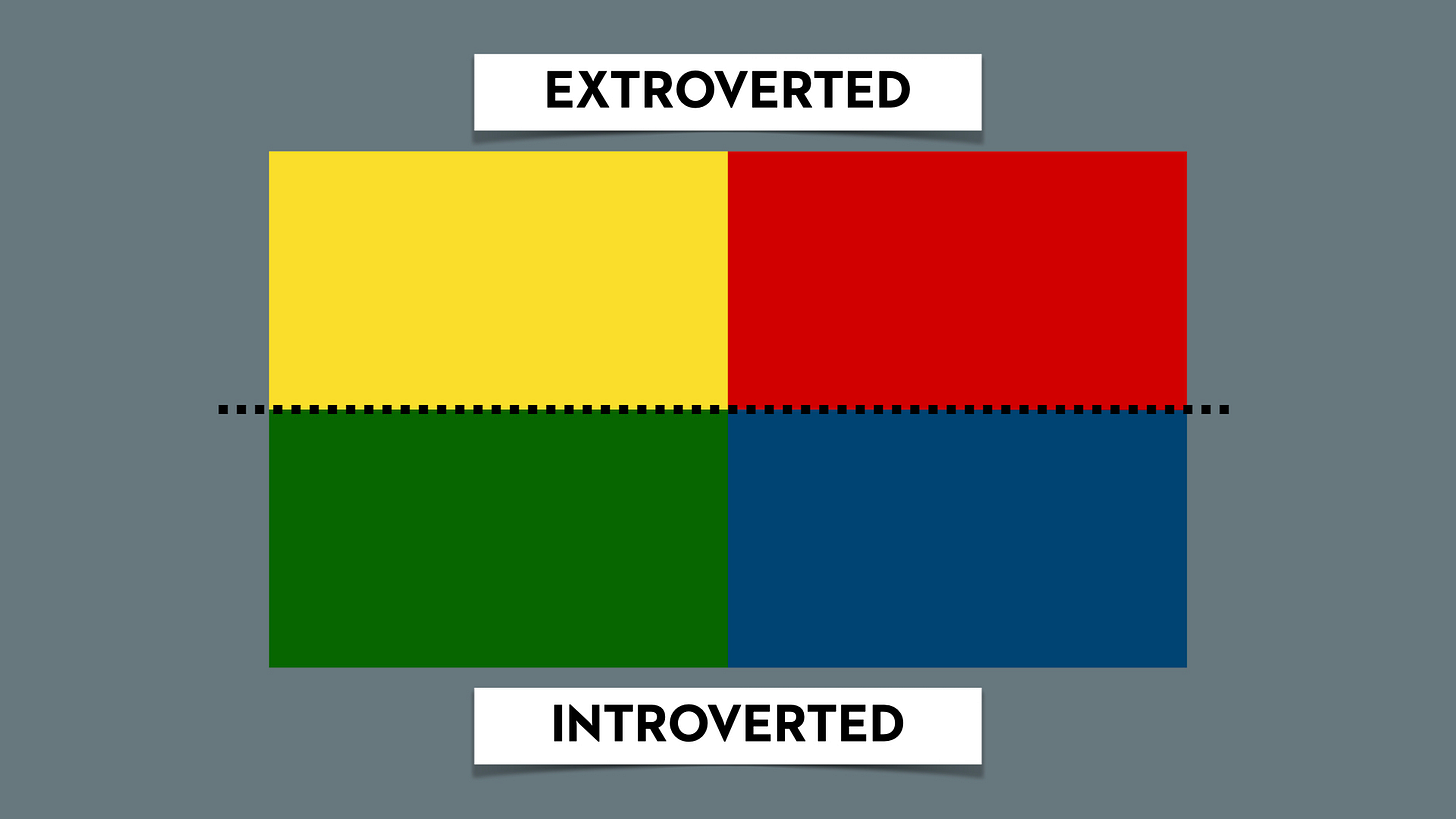
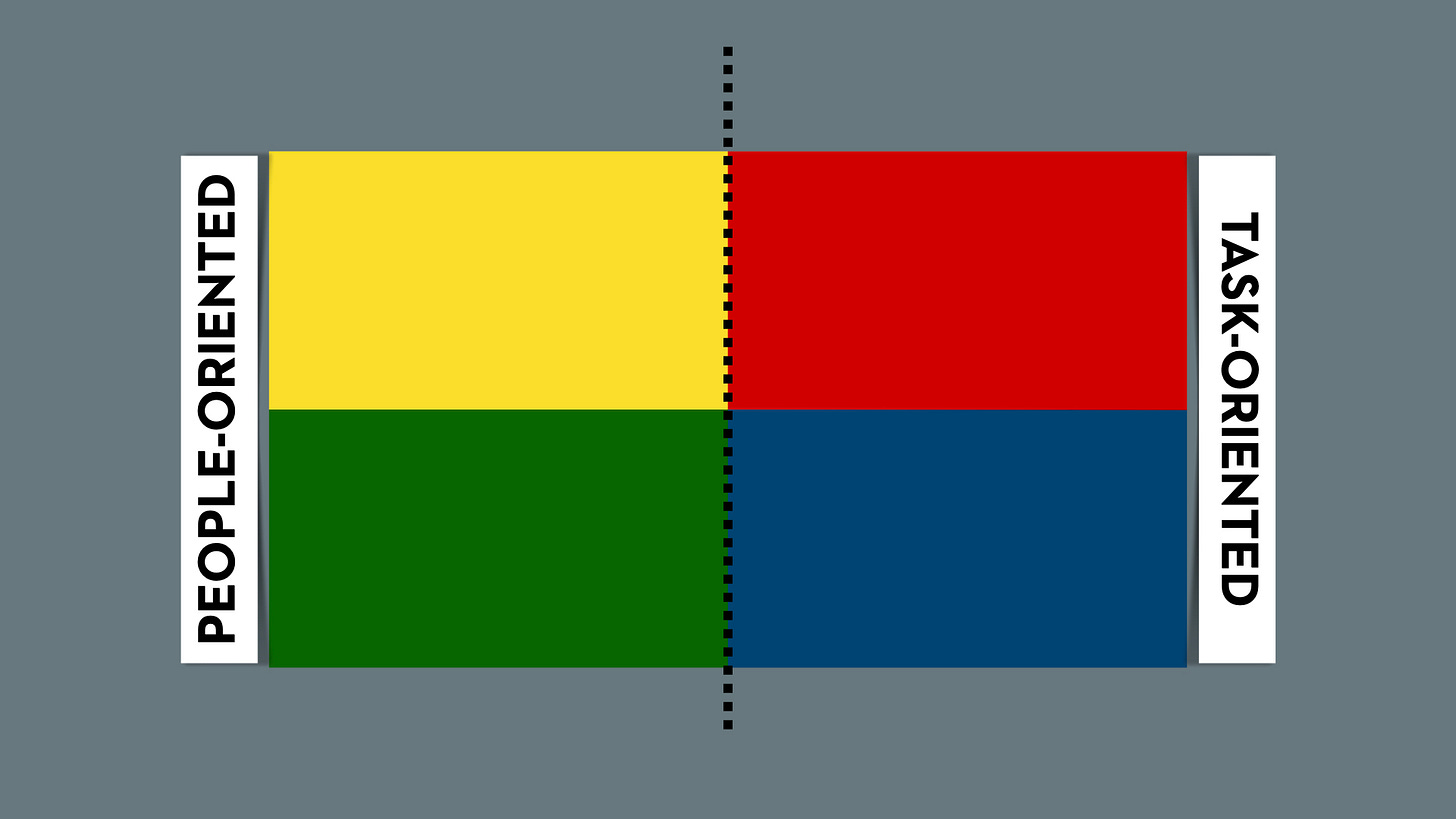
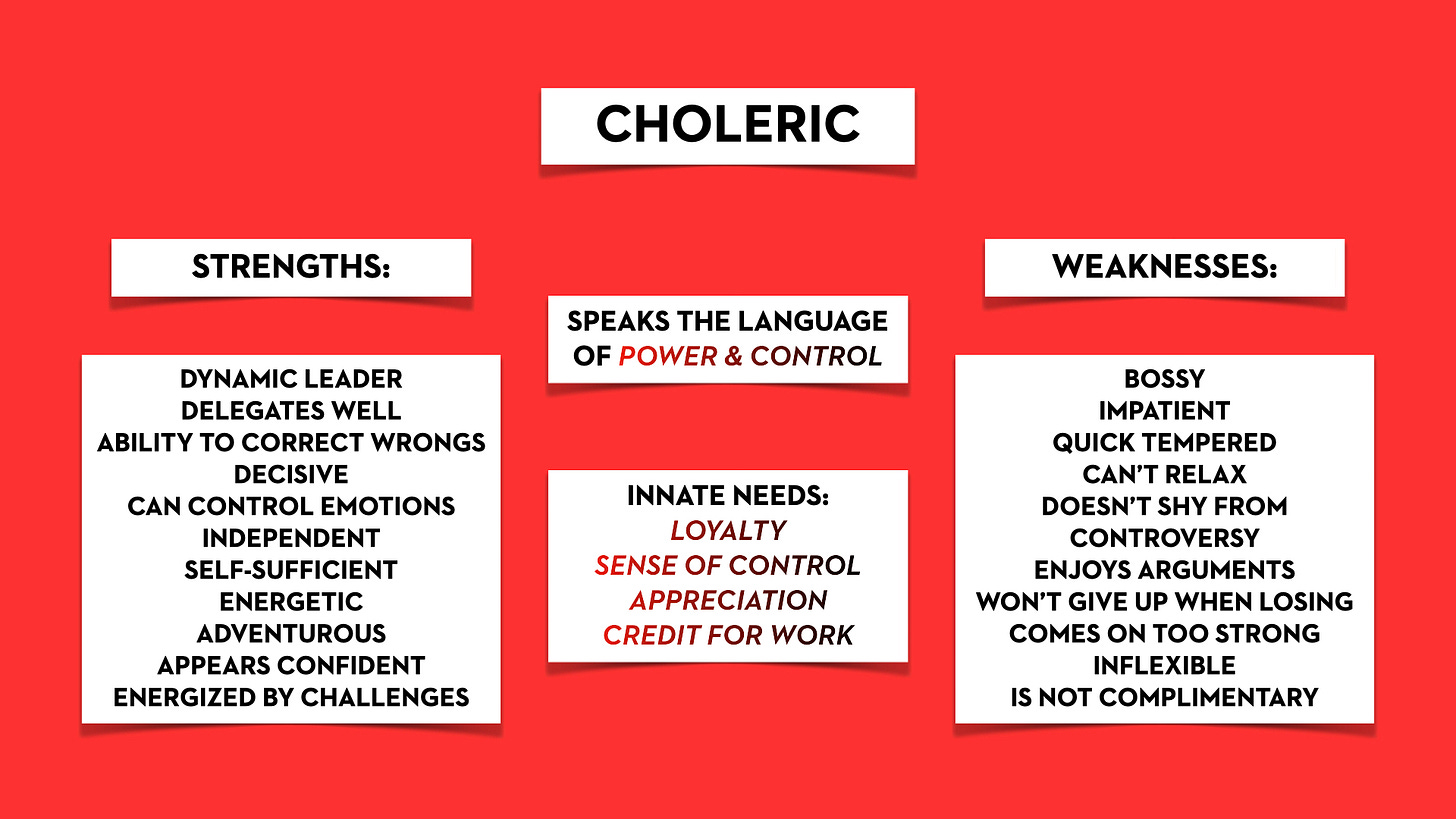



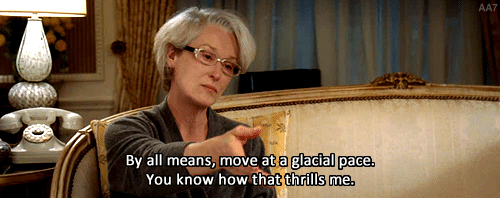

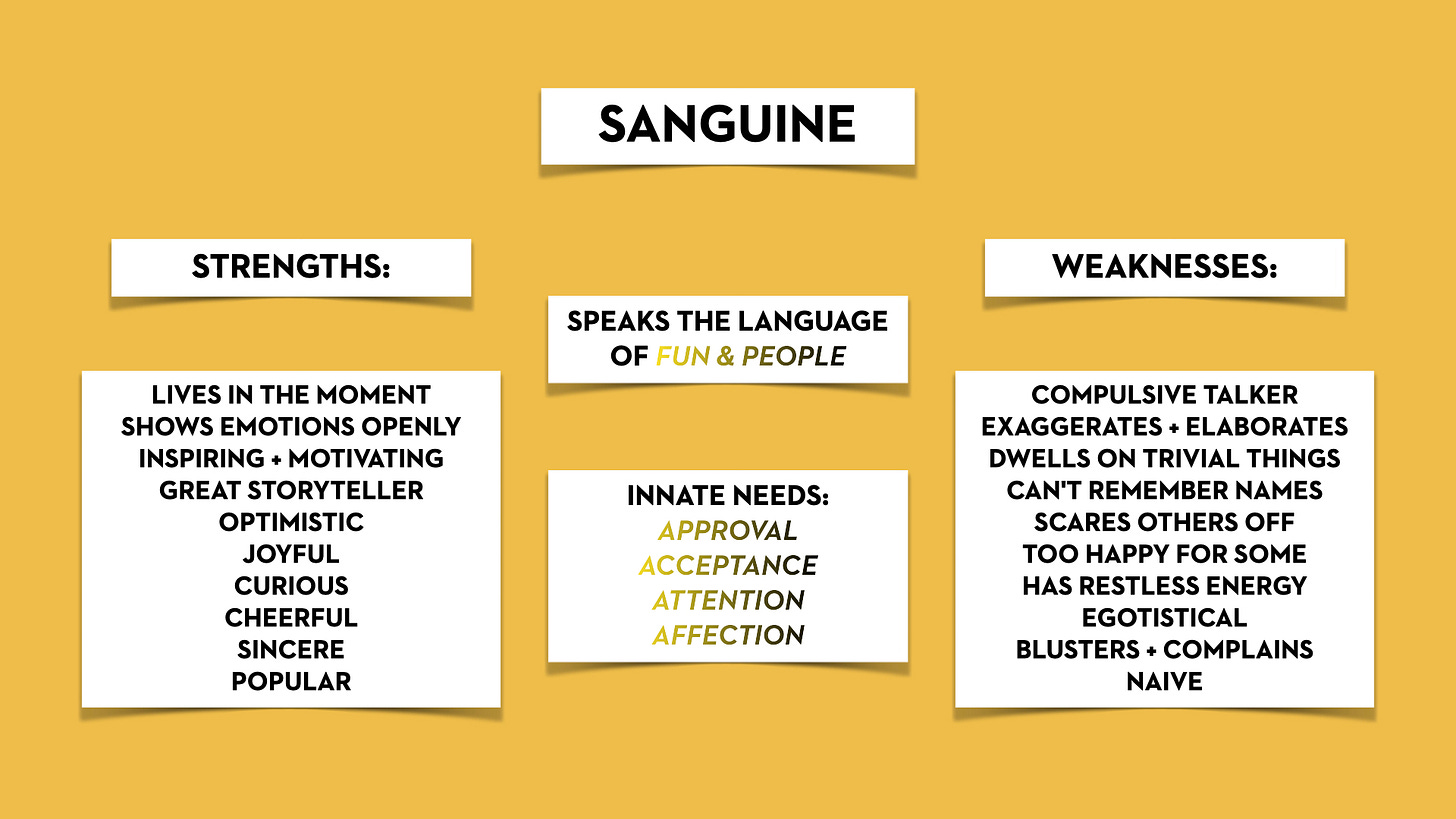


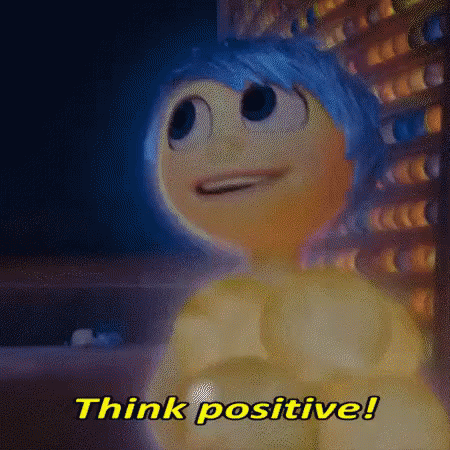


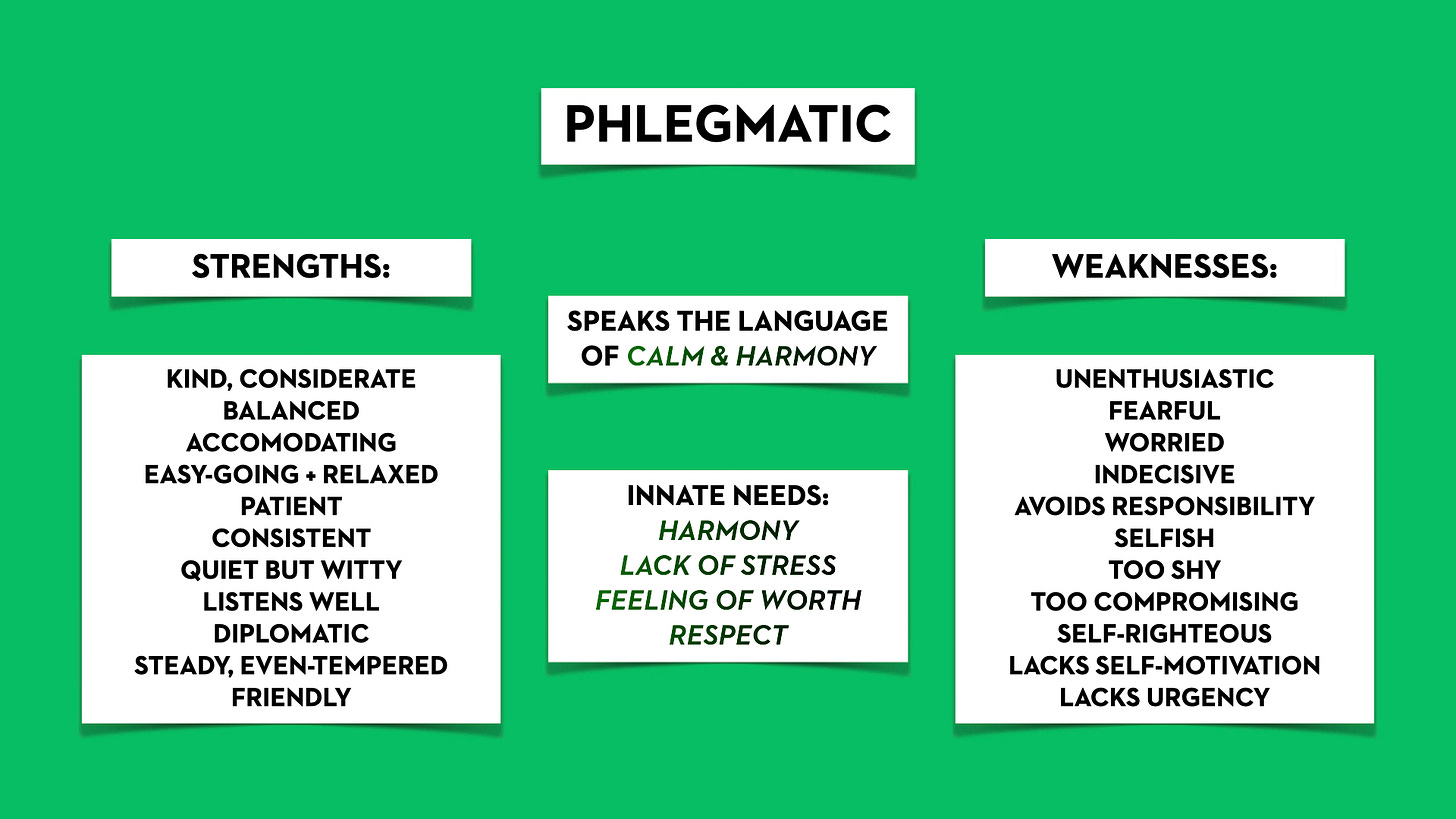

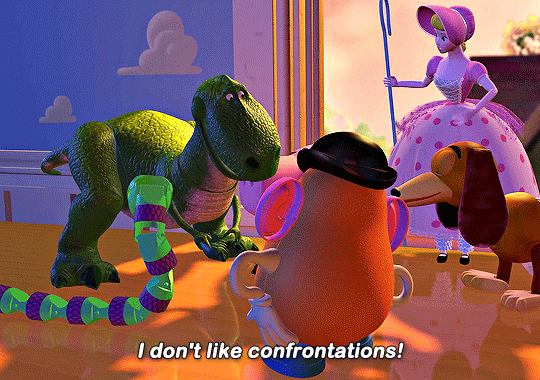


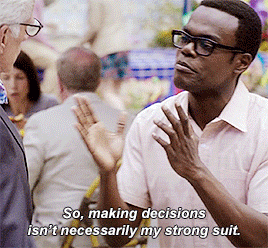
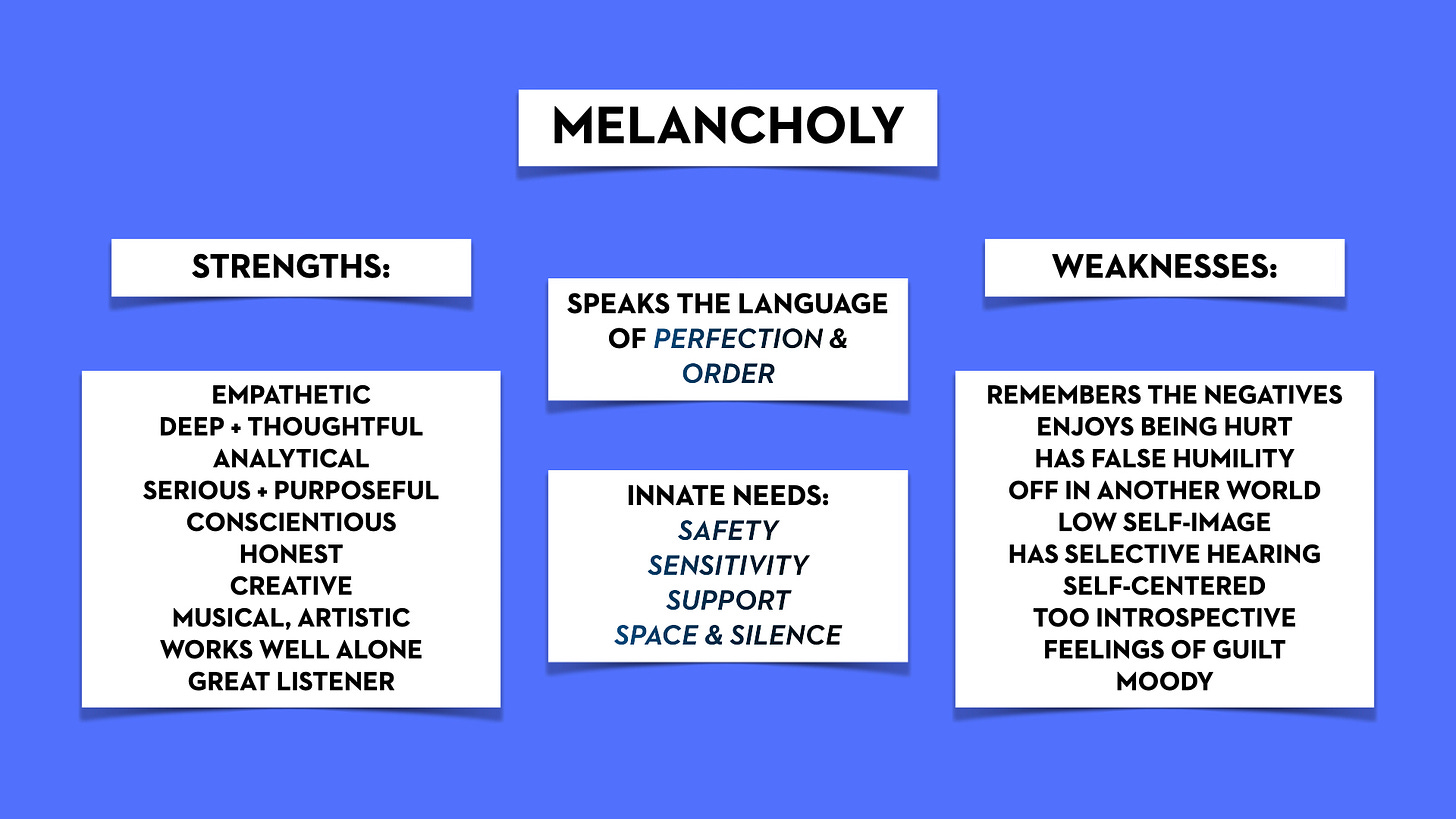



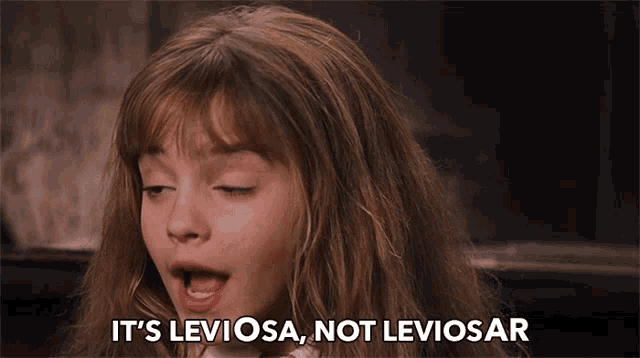

I am so intrigued by those definitions of extrovert and introvert. I definitely vocalize my thoughts before acting.